
Shropshire is a ceremonial county in the West Midlands of England, on the border with Wales. It is bordered by Cheshire to the north, the Welsh county of Wrexham to the north and northwest, Staffordshire to the east, Worcestershire to the southeast, Herefordshire to the south, and the Welsh county of Powys to the west. The largest settlement is Telford, while Shrewsbury is the county town.
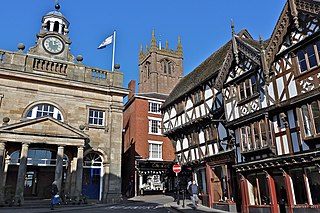
Ludlow is a market town and civil parish in Shropshire, England. It is located 28 miles (45 km) south of Shrewsbury and 23 miles (37 km) north of Hereford, on the A49 road which bypasses the town. The town is near the confluence of the rivers Corve and Teme.

Bridgnorth is a town and civil parish in Shropshire, England. The River Severn splits it into High Town and Low Town, the upper town on the right bank and the lower on the left bank of the River Severn. The population at the 2011 Census was 12,079.

Bridgnorth District was a local government district in Shropshire, England, from 1974 to 2009. Its council was based in the town of Bridgnorth. The district also included the towns of Much Wenlock, Shifnal and Broseley and the villages of Albrighton and Sheriffhales, as well as RAF Cosford.

Wellington is a market town and a civil parish in the borough of Telford and Wrekin, Shropshire, England. It is situated 3 miles (4.8 km) north-west of Telford town centre and 12 miles (19 km) east of Shrewsbury; the summit of The Wrekin lies 3 miles south-west of the town. The population of the town was 25,554 in 2011.

Much Wenlock is a market town and parish in Shropshire, England; it is situated on the A458 road between Shrewsbury and Bridgnorth. Nearby, to the north-east, is the Ironbridge Gorge and Telford. The civil parish includes the villages of Homer, Wyke, Atterley, Stretton Westwood and Bourton. The population of the civil parish, according to the 2001 Census, was 2,605, increasing to 2,877 by 2011.
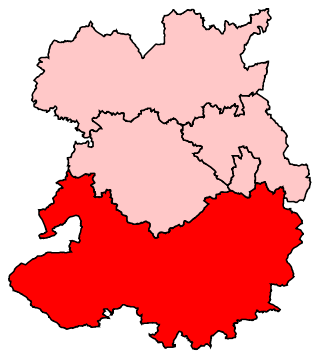
Ludlow was a constituency in Shropshire represented in the House of Commons of the UK Parliament.

Wenlock Priory, or St Milburga's Priory, is a ruined 12th-century monastery, located in Much Wenlock, Shropshire, at grid reference SJ625001. Roger de Montgomery re-founded the Priory as a Cluniac house between 1079 and 1082, on the site of an earlier 7th-century monastery. In 1101 bones, believed to be those of Saint Milburga, were discovered beneath the floor of the old church. The relics were ceremoniously translated to the main monastery church.
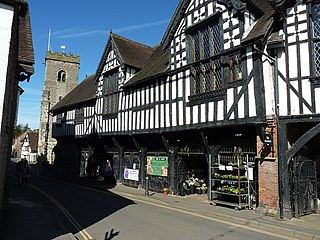
The Much Wenlock Guildhall is a guildhall located on Wilmore Street in Much Wenlock, Shropshire. It is a Grade II* listed building.
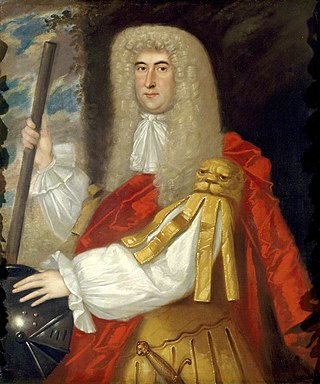
John Wolryche (c.1637–1685) was a lawyer and politician of landed gentry background who represented Much Wenlock in the House of Commons of England in two parliaments of Charles II. He was a moderate Whig, opposing the succession of James II but avoiding involvement in conspiracies.

The Shire Hall is a municipal building in Fore Street, Hertford, the county town of Hertfordshire, England. The building, which currently serves as a Magistrates' Court, is a Grade I listed building.

Newbury Town Hall is a municipal building in the Market Place in Newbury, Berkshire, England. The building, which is the meeting place of Newbury Town Council, is a Grade II listed building.

Thame Town Hall is a municipal building in the High Street, Thame, Oxfordshire, England. The town hall, which is the meeting place of Thame Town Council, is a Grade II listed building.

Darwen Town Hall is a municipal building in Croft Street, Darwen, Lancashire, England. It is the meeting place of Darwen Town Council.

Bourne Town Hall is a municipal building in North Street, Bourne, Lincolnshire, England. The town hall, which was the headquarters of Bourne Urban District Council, is a Grade II listed building.

Dudley Council House is a municipal building in Priory Road, Dudley, West Midlands, England. The Council House, which is the meeting place of Dudley Metropolitan Borough Council is a Grade II listed building.
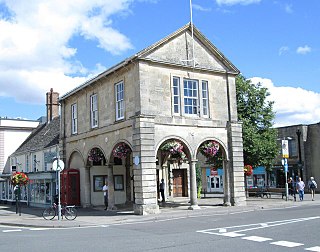
Witney Town Hall is a municipal structure in Spring Lane in Market Square, Witney, Oxfordshire, England. The town hall, which is the headquarters of Witney Town Council, is a Grade II* listed building.

Shropshire is a unitary authority area in the ceremonial county of Shropshire, in the West Midlands region of England. It was created on 1 April 2009 from the former districts of Bridgnorth, North Shropshire, Oswestry, Shrewsbury and Atcham and South Shropshire. The district is governed by Shropshire Council. It contains 188 civil parishes.

The Corn Exchange is a commercial building in the High Street in Much Wenlock, Shropshire, England. The structure, which is currently used as a library, is a Grade II listed building.
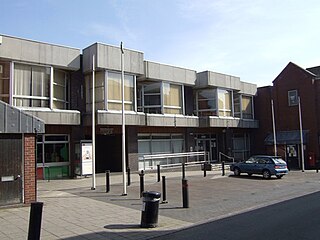
Whitchurch Civic Centre is a municipal building in Whitchurch, a town in Shropshire, in England. It accommodated the offices of Whitchurch Town Council until September 2023, when the building was closed, following the discovery of potentially dangerous reinforced autoclaved aerated concrete.






















